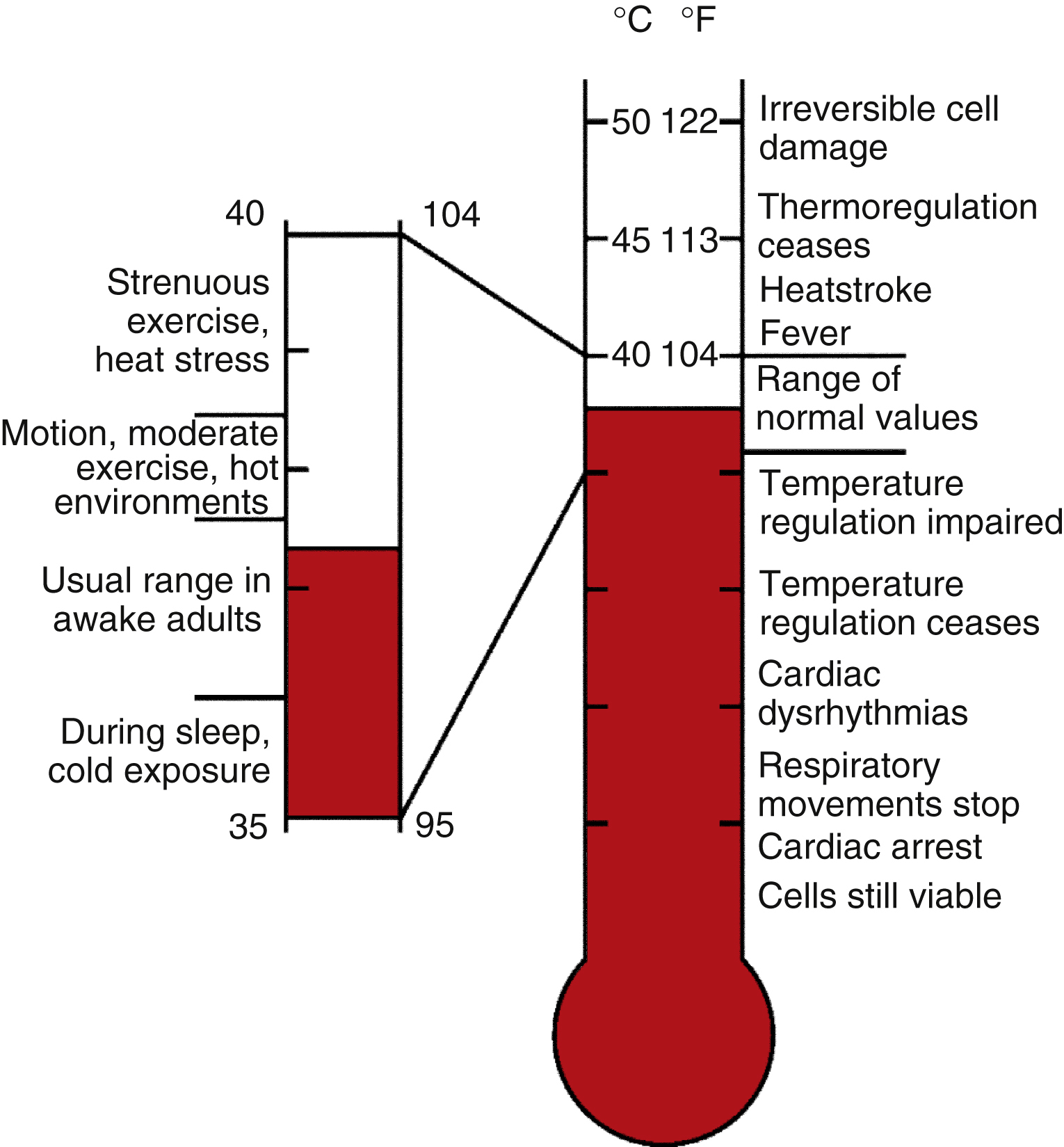body temperature, the level of heat produced and sustained by the body processes. Variations and changes in body temperature are major indicators of disease and other abnormalities. Heat is generated within the body through metabolism of nutrients and lost from the body surface through radiation, convection, and evaporation of perspiration. Heat production and loss are regulated and controlled in the hypothalamus and brainstem. Fever is usually a function of an increase in heat generation; however, some abnormal conditions, such as congestive heart failure, produce slight elevations of body temperature through impairment of the heat loss function. Contributing to the failure to dissipate heat are reduced activity of the heart, lower rate of blood flow to the skin, and the insulating effect of edema. Diseases of the hypothalamus or interference with the other regulatory centers may produce abnormally low body temperatures. Normal adult body temperature, as measured orally, is 98.6° F (37° C). Oral temperatures ranging from 96.5° F to 99° F are consistent with good health, depending on the person’s physical activity, the environmental temperature, and that person’s usual body temperature. Axillary temperature is usually from 0.5° F to 1° F lower than the oral temperature. Rectal temperatures may be 0.5° F to 1° F higher than oral readings. Body temperature appears to vary 1° F to 2° F throughout the day, with lows recorded early in the morning and peaks between 6 pm and 10 pm. This diurnal variation may increase in range during a fever. Whereas adult body temperature, normal and abnormal, tends to vary within a relatively narrow range, children’s temperatures respond more dramatically and rapidly to disease, changes in environmental temperature, and levels of physical activity.

